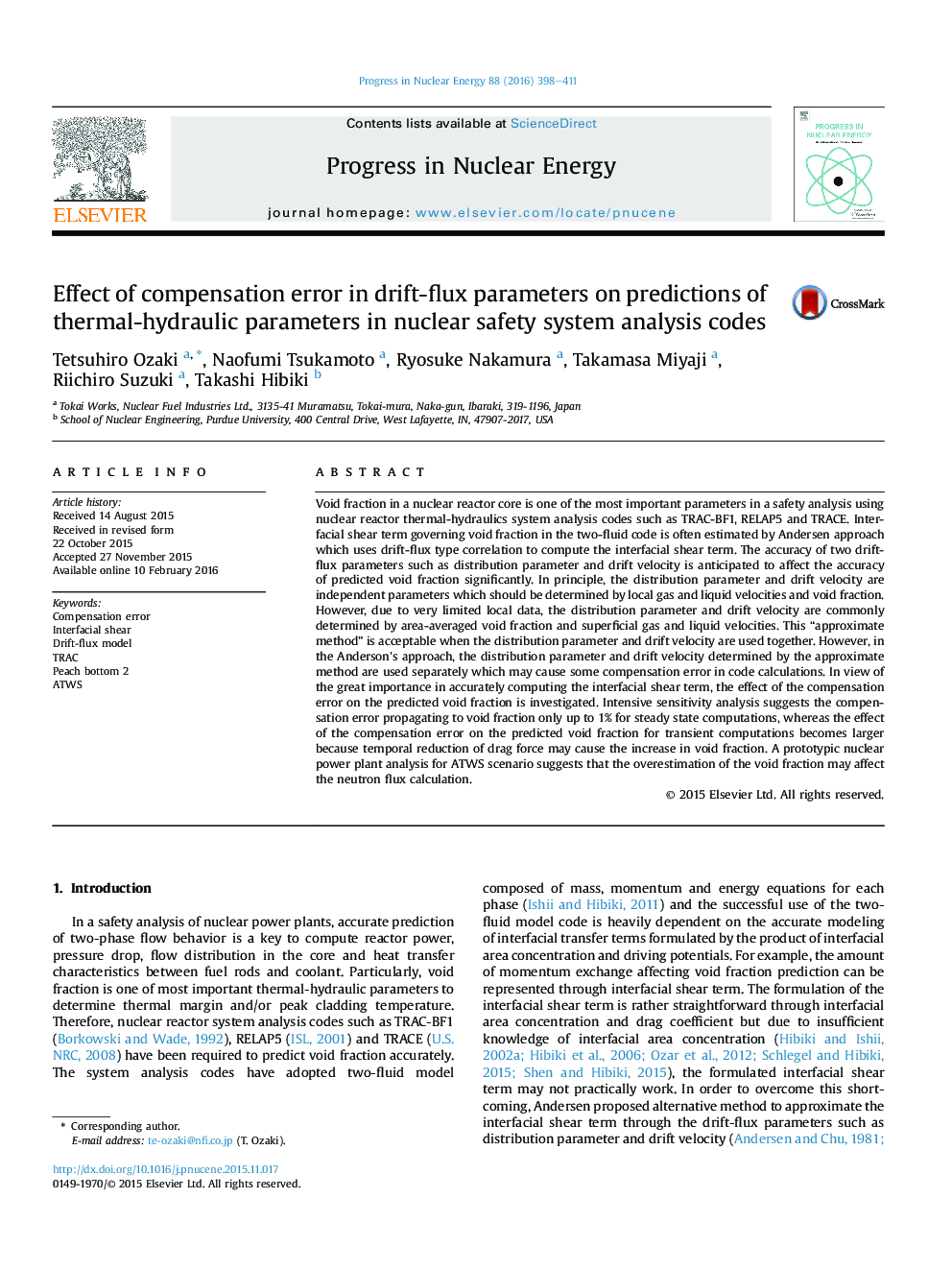| کد مقاله | کد نشریه | سال انتشار | مقاله انگلیسی | نسخه تمام متن |
|---|---|---|---|---|
| 1740407 | 1521750 | 2016 | 14 صفحه PDF | دانلود رایگان |
• Compensation error of drift-flux parameters on interfacial shear model is estimated.
• Sensitivity Analysis model is developed to estimate compensation error.
• Effects of compensation error on TRAC code performance are identified.
• Effects of compensation error on steady and transient calculation are evaluated.
• Effects of compensation error on real plant analysis are estimated.
Void fraction in a nuclear reactor core is one of the most important parameters in a safety analysis using nuclear reactor thermal-hydraulics system analysis codes such as TRAC-BF1, RELAP5 and TRACE. Interfacial shear term governing void fraction in the two-fluid code is often estimated by Andersen approach which uses drift-flux type correlation to compute the interfacial shear term. The accuracy of two drift-flux parameters such as distribution parameter and drift velocity is anticipated to affect the accuracy of predicted void fraction significantly. In principle, the distribution parameter and drift velocity are independent parameters which should be determined by local gas and liquid velocities and void fraction. However, due to very limited local data, the distribution parameter and drift velocity are commonly determined by area-averaged void fraction and superficial gas and liquid velocities. This “approximate method” is acceptable when the distribution parameter and drift velocity are used together. However, in the Anderson's approach, the distribution parameter and drift velocity determined by the approximate method are used separately which may cause some compensation error in code calculations. In view of the great importance in accurately computing the interfacial shear term, the effect of the compensation error on the predicted void fraction is investigated. Intensive sensitivity analysis suggests the compensation error propagating to void fraction only up to 1% for steady state computations, whereas the effect of the compensation error on the predicted void fraction for transient computations becomes larger because temporal reduction of drag force may cause the increase in void fraction. A prototypic nuclear power plant analysis for ATWS scenario suggests that the overestimation of the void fraction may affect the neutron flux calculation.
Journal: Progress in Nuclear Energy - Volume 88, April 2016, Pages 398–411
